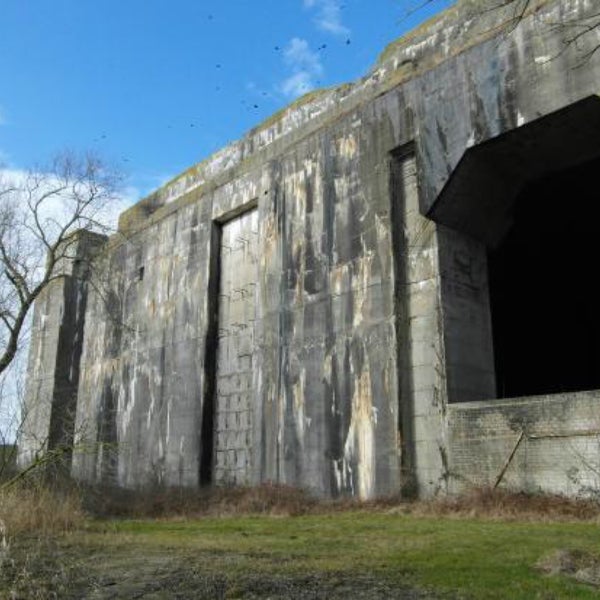
Two hours later the u-boat crews were told to head to sea or blow up their ships. The last air-raid was at midnight on May 2nd 45. U-1162 in the base which was by then standing in an area of total destruction.

Howaldtswerke-yard before leaving to Horten, Norway, on April 27th 1945.

U-170 managed to leave the box and then started producing electricity for the bombed Six of the men trapped on board managed to get into an air-bubble, three climbed from there into the tower and escaped in a hard struggle against the rising water, the bodies of the five other remained on board until today. U-4708 was pushed into the air, collided with the pier and sank within a few moments. The pressure within the box caused by the explosion was such intense that the instruments on board U-170 simulated a 40-m-dive for some minutes. U-4708 was damaged by steel plates flying around and sprang a leak. There were 5 workers and 2 crew members on board. Inside the box the small U-4708 was lying close to the larger U-170 due to some testing works. Just 1000 m away the southern gate of the "Kilian" was destroyed by a bomb, its steel plates still lying on the harbour bottom. There were no direct attacks neither by the RAF nor the USAAF on "Kilian" until the night from April 9th to 10th when the RAF started its 81st attack on Kiel with 359 aircraft during which the heavy cruiser Admiral Scheer was sunk and Admiral Hipper and Emden seriously damaged. The Kilian bunker during sandfill in June, 1994 - photo by Tim. During the air-raids on Kiel "Kilian" took some hits which did not cause serious damage. In January 43 1,200 men were working in two shifts around the clock, using 1200 m 3 concrete per day. Until the end of the works 200.000 m 3 concrete were used by Dyckerhoff & Widmann AG. Later the ceiling was strengthened with 1,3 m heavy concrete which still can be seen on the remaining work box today. The ceiling was then 3,5 m thick, the walls measured 2,5 m. On November 13th 1943 "Kilian" was consecrated, the first U-boat to enter was Until summer 1943 the walls were built, the construction of the ceiling lasted until November 43. It was also then when the work box-section on the land side was completed. In autumn 1942 the 1st concrete box measuring 42,3 x 8 m was sunk to create a foundation for the two outer and the inner wall. Kilian bunker in March, 1990 - photo by Tim. Construction started in winter 1941/42, many workers came from surrounding working camps and also prisoners-of-war and deported people from the east being not allowed to find shelter in bunkers during air-raids.

The base was built without a dry pit, between the three quays a wooden construction was laid as a working platform. On the North-West-corner a two-storey anti-air-raid-tower with accommodation space was erected with walls of only 30 cm strength. There was no protection below the surface. The pen was situated right within the water with hanging steel gates on the harbour side. Therefore "Kilian" was the only base where two boats could be berthed one after the other. There were two boxes each with a length of 150 m, the berths within stretched over 138 m per side. The ceiling consisted of pre-stressed concrete-layers being in the end 4,8 m thick, the walls then had a strength of 3,3 m. The U-boat-base Kilian in Kiel was designed as a shelter for new-built U-boats and such with little damages. The Kilian bunker in June, 1996 - photo by Tim.


 0 kommentar(er)
0 kommentar(er)
